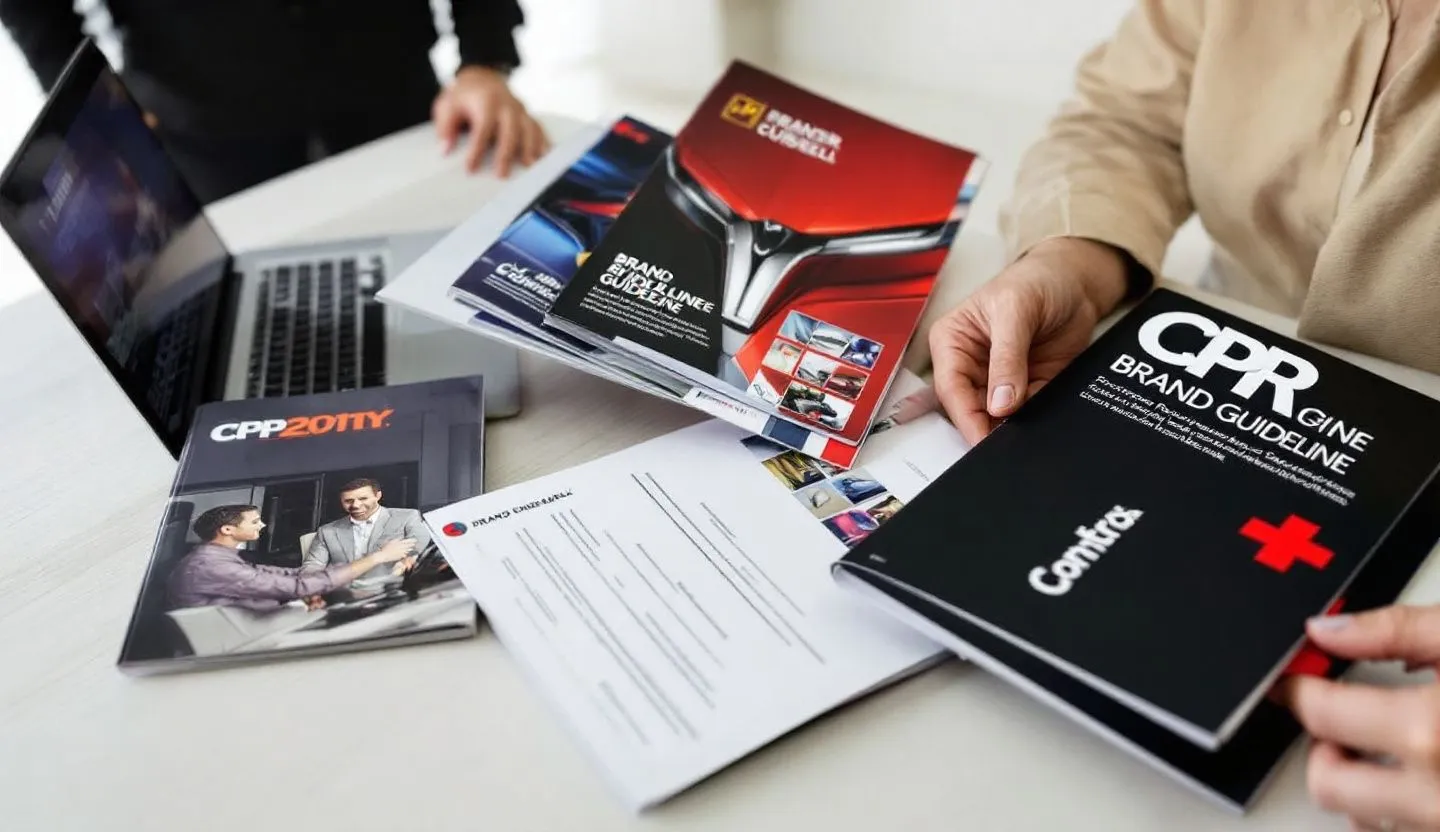Let’s be honest: every automotive marketing leader I know has been there. You pour weeks into a new campaign,beautifully crafted, meticulously reviewed, perfectly on-brand. But then, as it filters out to dozens or hundreds of dealerships, something happens. Somewhere in the wild, a sales manager swaps out your brand’s signature blue for a close-but-not-quite shade. Someone else tweaks your logo “just to fit.” Suddenly, what was cohesive and confident starts to fray at the edges. And your heart sinks, because you know: every inconsistency chips away at trust, dilutes impact, and muddies the story you’ve worked so hard to tell.
This isn’t just a creative problem; it’s a business one. In the automotive world,where local adaptation is essential, but the stakes for brand consistency are sky-high,the tension between speed, scale, and control is felt daily. And let’s not forget the compliance and legal headaches that arise when rogue content veers off course. The pain is real, and it’s not just about a misplaced Pantone. It’s about reputation, customer trust, and measurable revenue.
But something fundamental is shifting in how brands approach these challenges. Automated content systems are transforming the way automotive enterprises manage, scale, and protect their brands, making true automotive brand consistency not just possible, but operationally achievable. Let’s explore why this shift matters, how it works, and what it unlocks for every leader who’s ever lost sleep over mismatched assets or off-brand messaging.
The daily reality of brand inconsistency in automotive
If you’ve ever had to explain why a dealership’s Facebook ad is using last year’s tagline (again), you know the reality: keeping brand presentation unified across hundreds of locations, vendors, and partners is a Herculean task. The decentralized nature of automotive sales,regional groups, franchise models, multi-brand portfolios,means that marketing assets multiply fast and travel farther than you ever expect.

- Asset version control: Multiple teams, agencies, and locations each save, edit, and share files independently. Result: Outdated brochures, mismatched banners, and confusion over which logo is “the right one” circulate constantly.
- Manual customization chaos: Local managers, eager to personalize promotions, “tweak” core assets: Swap out images, move logos, or,worse,rewrite regulated terms. The intention is good, but the fallout is costly.
- Compliance and legal risk: Inconsistent disclosures, incorrect financing language, or missing disclaimers can trigger fines and erode consumer trust. Every deviation is a compliance officer’s nightmare.
- Slowed time-to-market: Central marketing teams become bottlenecks as they scramble to approve or fix every piece of content. Local teams get frustrated. Momentum stalls.
These aren’t abstract problems. They show up in quarterly NPS scores, in lost deals, and in tense calls with legal or the C-suite. Worse, they accumulate quietly, undermining the very brand equity we’re all trying to build.
Why the old approaches aren’t keeping up
The automotive industry has thrown plenty of resources at this challenge,brand guideline PDFs, asset libraries, digital asset management (DAM) systems, training modules, and email reminders. But most of these tools still rely on human memory, manual oversight, and the hope that everyone cares as much about the brand as you do.
Take asset libraries, for example. They’re a step up from shared drives, but they can’t prevent someone from downloading a file and then making unauthorized edits. Brand guidelines are essential, but unless they’re embedded directly into every workflow, they get ignored or forgotten under deadline pressure. And no one,certainly not a busy local sales manager,wants to wade through a 60-page PDF just to make a flyer for Saturday’s test-drive event.
This isn’t to say these resources aren’t valuable. They’re foundational. But in a landscape where speed, scale, and local adaptation are non-negotiable, they simply aren’t enough. The friction between centralized control and decentralized execution is only getting more pronounced as digital channels proliferate and consumer expectations rise.
The shift: Automation as a brand consistency enabler
Here’s where the landscape is changing. Automated content systems,purpose-built platforms that combine templates, rules, workflows, and integration,are bringing a new level of discipline and agility to automotive brand management. These aren’t just asset repositories; they’re intelligent engines that make brand consistency the default, not the exception.
Let’s break down how automated content systems address the very pain points that keep marketing leaders up at night.
How automated content systems solve real automotive pains
Centralized control with local flexibility
One of the biggest reasons for brand drift is the push-pull between central marketing and local teams. Automated systems bridge this gap by allowing headquarters to lock down critical brand elements (logos, colors, regulated copy) while giving dealerships the freedom to personalize approved areas,think event details, contact info, or localized offers.
For example, a leading global automaker rolled out a platform that lets any dealership generate social media graphics, email banners, and print ads by filling out a simple form. The core brand DNA,fonts, colors, legal disclaimers,can’t be altered. But local flavor is still possible, and nobody needs to play designer or copywriter. The result? Every asset looks and feels unmistakably on-brand, no matter who creates it or where it runs.
Real-time compliance baked into every asset
Automotive marketing is heavily regulated, from APR disclosures to lease terms and privacy statements. Automated systems ensure that every approved asset includes the latest required legal language,no more chasing down rogue flyers or correcting errors after the fact.
Consider the alternative: a compliance officer running quarterly audits and discovering dozens of violations, each one a potential fine or lawsuit. With automated templates, legal updates can be pushed live to every asset instantly, and required elements are non-removable. It’s a sea change for compliance and risk teams, who can finally shift from policing to partnering.
Version control and update agility
When a new model launches or incentives change, speed matters. Automated content systems allow marketing ops to update a single template or global asset, instantly reflecting the change everywhere it’s used. No more hunting down old files or wondering whether every dealership is promoting the right price.
For instance, when a major OEM recently updated its EV lineup, the marketing team pushed new imagery and feature highlights to every dealership’s digital signage and website banners in under 24 hours. The tech didn’t just save time,it protected the brand from mixed messages and missed opportunities.
Integrated analytics and brand health insights
It’s not enough to “hope” the brand is being represented correctly. Automated systems provide dashboards and reports that show which assets are being used, where, and by whom. If a certain dealership consistently goes off-brand, you’ll know. If a campaign asset isn’t being adopted, you can troubleshoot in real time.
This transparency turns brand management into an ongoing, data-driven process. Creative directors and CMOs gain visibility into what’s working, what’s not, and where to focus enablement or training.
What makes an automated content system “enterprise-grade” for automotive?
Not all solutions are created equal. When evaluating platforms, enterprise teams need more than just digital templates. The right system will be:
- Secure and compliant: Enterprise-grade encryption, user permissions, audit trails, and regulatory compliance (GDPR, CCPA, etc.) are non-negotiable. IT, legal, and risk teams should be able to sleep at night.
- Integratable with existing tech stacks: Your DMS, CRM, and marketing automation tools all need to “talk” to your content system. SSO, APIs, and flexible data flows matter.
- Scalable for global and local complexity: Multi-brand, multi-region, multi-language? The system should handle granular permissioning, localization, and brand variations,without chaos.
- Intuitive for everyday users: If the tool isn’t as easy as Canva or Google Docs, adoption will lag. Field teams, partners, and even non-marketers should be able to create beautiful, compliant assets in minutes.
- Robust in reporting and governance: Central teams need oversight and analytics. Who’s using what, where are the gaps, and how can you optimize?
If you’re in the trenches of brand and marketing ops, you already know: a patchwork of file shares, email approvals, and “just trust us” won’t cut it.
Real-world impact: Stories from the automotive front lines
Let’s ground this in reality. A top-10 global automaker faced a recurring problem: every quarter, new offers and legal requirements triggered a flood of asset requests from hundreds of dealers. The central team was swamped, local teams were frustrated, and compliance risk was growing. After implementing an automated content platform, the results were immediate:
- Asset creation time dropped by 75%: Dealers could generate their own flyers and banners in minutes, not days, using pre-approved templates.
- Brand audit scores rose sharply: Regular mystery-shopper audits showed a 90%+ compliance rate on branding and legal requirements, up from just 60% before.
- Legal exposure decreased: By locking required disclosures and updating them system-wide, the company avoided costly fines and reputational hits.
- Creative capacity shifted to strategy: The central team stopped firefighting and started focusing on new campaigns, partnerships, and innovation.
The lesson: Automated content systems don’t just make things faster. They fundamentally shift the way marketing, compliance, and local teams work together. Everyone wins.
The human side: Why brand consistency matters more than ever
This isn’t just about logos and legal lines. Automotive brand consistency is about trust. When a customer sees the same messaging, the same attention to detail, and the same tone,whether online, in a dealership, or on a billboard,they feel reassured. They believe the brand cares. And that translates into loyalty, advocacy, and ultimately, sales.
But there’s another layer, too: your internal teams. When local marketers and salespeople know they can create beautiful, compliant assets without hassle, they feel empowered. When compliance and legal teams aren’t in constant triage mode, they become enablers, not obstacles. And when brand leaders can finally focus on strategy,not asset policing,everyone feels the lift.
In today’s market, where new entrants, digital disruptors, and changing consumer expectations are rewriting the rules, the brands that win are the ones that show up consistently, confidently, and quickly,everywhere.
Building the business case for automated content systems
For enterprise leaders, the value of automotive brand consistency isn’t theoretical. It’s measurable. Here’s how to frame the impact:
- Risk reduction: Every off-brand asset is a potential compliance, legal, or reputational risk. Automated systems make deviation nearly impossible, reducing exposure and insurance costs.
- Efficiency gains: Central teams save hundreds (even thousands) of hours per year previously spent on manual reviews and asset rework. Local teams move faster, seizing market moments.
- Revenue lift: Consistent branding drives higher conversion rates, better lead quality, and increased customer trust. Multiple studies show that brands with strong consistency outperform their peers in customer acquisition and retention.
- Data-driven improvement: Analytics dashboards turn guesswork into insight, allowing continuous optimization of campaigns, creative, and processes.
The ROI isn’t just in cost savings (though those are real). It’s in the ability to move with agility, take risks, and innovate,knowing your brand foundation is unshakeable.
Making it real: Practical steps for automotive leaders
I’ve been in enough enterprise rollouts to know: the tech is only half the battle. Here’s what makes the difference when deploying automated content systems for automotive brand consistency:
- Secure executive buy-in: When the CMO, CIO, and legal are aligned on the value,risk, speed, and growth,the project has momentum and staying power.
- Map the user journey: Spend time with local marketers, sales teams, and partners. What do they need? Where do they get stuck? Build the system around their real workflows, not just HQ priorities.
- Start with critical assets: Don’t try to automate everything at once. Begin with high-visibility, high-risk materials,offer sheets, digital banners, compliance-heavy ads,then expand.
- Invest in enablement: Training, support, and clear documentation are essential. The more intuitive the tool, the faster adoption will climb.
- Measure and iterate: Use built-in analytics to track usage, compliance, and impact. Celebrate wins, course-correct quickly, and keep the conversation open between central and local teams.
The most successful brands I’ve seen treat their automated content system not as a “project,” but as a living part of their marketing engine,a platform for scale, consistency, and creativity.
Connecting the dots: The future of automotive brand management
We’re at an inflection point. As the automotive industry shifts toward electrification, digital-first retail, and new ownership models, the pressure to show up with one unified voice is only intensifying. Automated content systems are quickly moving from “nice to have” to “mission critical”,not because they replace creative talent or strategic thinking, but because they free up those resources for what matters most.
Imagine a world where every dealership, every vendor, every campaign reflects the same high standard,instantly, everywhere, every time. Where compliance is proactive, not reactive. Where creative teams can focus on breakthrough ideas, not asset policing. That’s not a distant dream. For many brands, it’s already happening.
The future belongs to brands that can move fast without breaking things. In automotive, that means making consistency your competitive edge,and automation your secret weapon.
The daily struggle for automotive brand consistency is a reality I know intimately,from the late-night calls about off-brand assets to the “how did this happen?” moments in quarterly reviews. But the game is changing. Automated content systems are rewriting the rules, giving marketing leaders, compliance officers, and local teams a shared platform to do their best work,faster, safer, and with greater impact.
By embedding brand guidelines, compliance requirements, and creative flexibility directly into content workflows, these systems transform brand consistency from an aspirational goal to an operational standard. The result isn’t just fewer headaches for central teams; it’s a stronger, more trusted brand at every customer touchpoint. Efficiency improves, risk drops, and creative potential expands. Most importantly, your teams,everywhere from HQ to the showroom floor,are empowered to move at the speed of the market, without ever compromising what makes your brand unique.
In a world where automotive competition is relentless and customer expectations are only rising, the brands that win will be those who master both speed and consistency. Automated content systems are the bridge. It’s time to step confidently into a future where your brand shows up strong, everywhere, every time,and where you, as a marketing leader, can finally focus on what’s next instead of what just went wrong.







